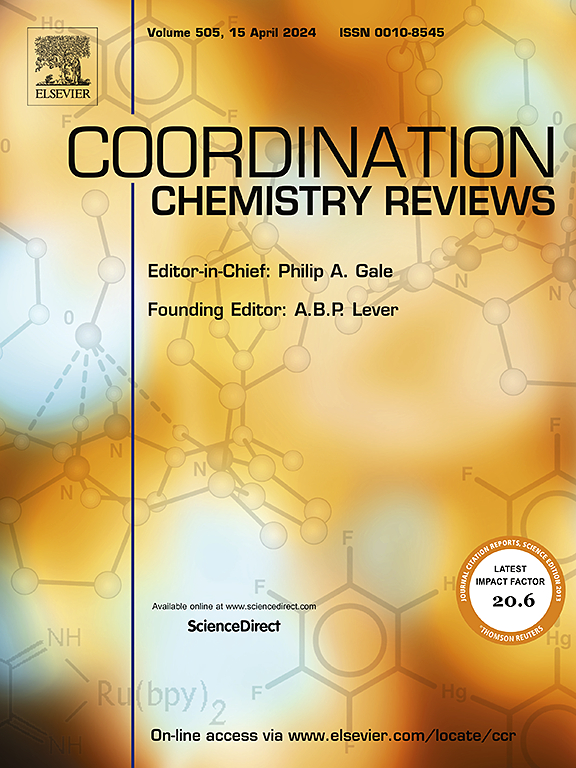混合价卤化物钙钛矿
IF 20.3
1区 化学
Q1 CHEMISTRY, INORGANIC & NUCLEAR
引用次数: 0
摘要
混合价化合物-具有至少两种不同氧化态的元素-可以显示由不同价之间的电子转移引起的新兴光学和传输现象(价间电荷转移;IVCT)。由于卤化物钙钛矿在许多光电器件中显示出作为活性材料的前景,因此在这种多功能材料家族中纳入和研究混合价的影响是一个合适的时机,可以获得从绝缘体到半导体到金属的可调谐电子结构。在此,我们介绍了分子中混合价的基本概念,并讨论了如何将这些概念推广到扩展固体中的混合价。然后,我们回顾了从20世纪初到现在的一些关于3D和2D卤化物钙钛矿和混合价杂质卤化物钙钛矿的混合价的研究。通过对金属离子、配位体及其几何形状和整体结构维度的明智选择,化学家可以对混合价钙钛矿中的电子离域进行强大的合成控制,我们希望看到这类有趣的材料扩展到包含新的成分。本文章由计算机程序翻译,如有差异,请以英文原文为准。

Mixed-valence halide perovskites
Mixed-valence compounds—which feature an element in at least two different oxidation states—can display emergent optical and transport phenomena stemming from electron transfer between the different valences (intervalence charge-transfer; IVCT). As halide perovskites show promise as active materials in numerous optoelectronic devices, it is an opportune moment to incorporate and study the effects of mixed-valence in this versatile materials family, to access tunable electronic structures ranging from insulators to semiconductors to metals. Herein, we introduce the basic concepts of mixed-valence in molecules and discuss how these concepts may be extended to mixed-valence in extended solids. We then review the few studies of mixed valence in 3D and 2D halide perovskites and halide perovskites with mixed-valence impurities, ranging from studies in the early 1900s to the present day. Through judicious choice of metal ion, its coordinating ligands and their geometry, and overall structural dimensionality, chemists can exert powerful synthetic control over electronic delocalization in mixed-valence perovskites, and we hope to see this intriguing materials class expand to encompass new compositions.
求助全文
通过发布文献求助,成功后即可免费获取论文全文。
去求助
来源期刊

Coordination Chemistry Reviews
化学-无机化学与核化学
CiteScore
34.30
自引率
5.30%
发文量
457
审稿时长
54 days
期刊介绍:
Coordination Chemistry Reviews offers rapid publication of review articles on current and significant topics in coordination chemistry, encompassing organometallic, supramolecular, theoretical, and bioinorganic chemistry. It also covers catalysis, materials chemistry, and metal-organic frameworks from a coordination chemistry perspective. Reviews summarize recent developments or discuss specific techniques, welcoming contributions from both established and emerging researchers.
The journal releases special issues on timely subjects, including those featuring contributions from specific regions or conferences. Occasional full-length book articles are also featured. Additionally, special volumes cover annual reviews of main group chemistry, transition metal group chemistry, and organometallic chemistry. These comprehensive reviews are vital resources for those engaged in coordination chemistry, further establishing Coordination Chemistry Reviews as a hub for insightful surveys in inorganic and physical inorganic chemistry.
 求助内容:
求助内容: 应助结果提醒方式:
应助结果提醒方式:


